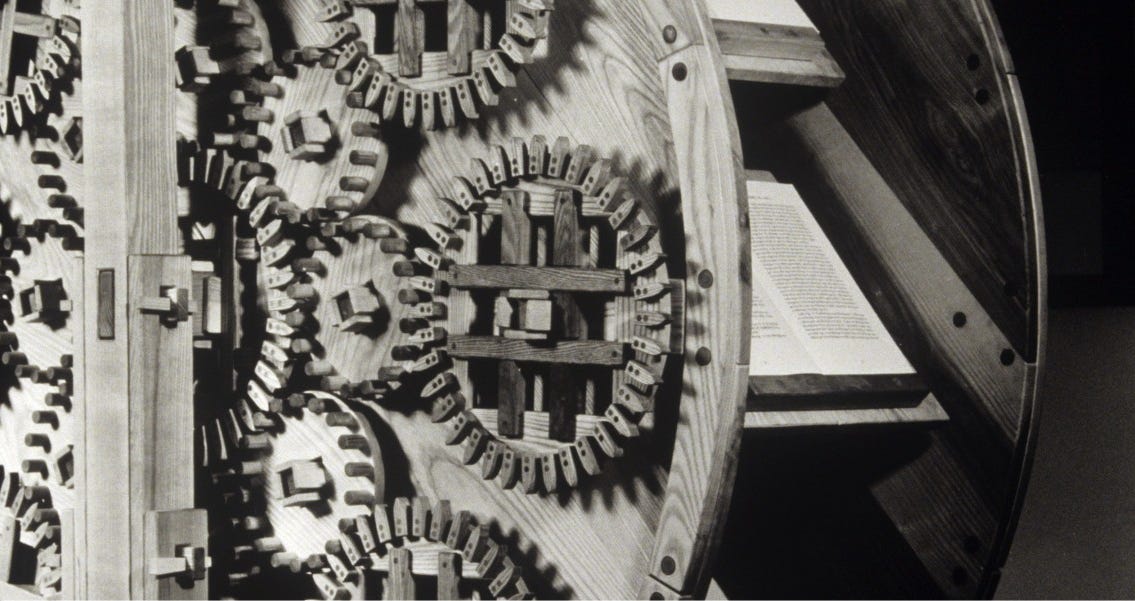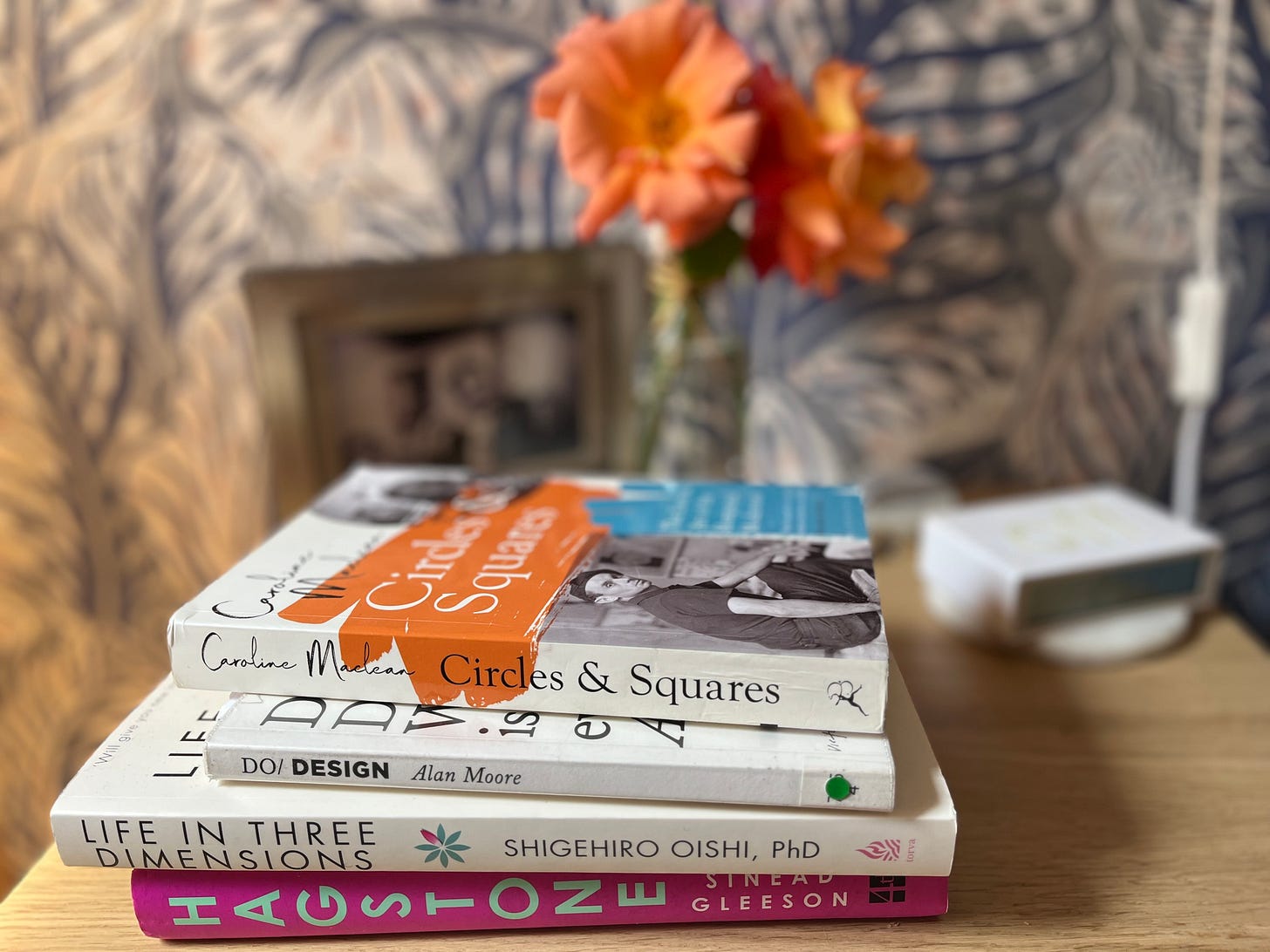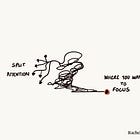Rethink: How do you hold multiple ideas at once?
What a 16th-century invention teaches us about modern attention.
Dear Rethinkers,
How many books do you have on the go right now?
I usually have three (ish). One for escape, one that shifts my mood (often a memoir) and one that is work-related. What I reach for depends entirely on how I’m feeling. It can be nourishing, but sometimes it tips into something else entirely: book snacking. A few pages here, a few bites there. The satisfaction of reading from beginning to end starts to fray.
I’ve resisted using e-readers because they seem to make this tendency worse—it’s too easy to flick ahead. I’m not alone in this. More and more friends tell me they’re struggling to read in the way they used to. The process of reading, like attention, has become fragmented. Chaotic, even.
I’ve been reading a lot about how attention is a problem to fix—something to discipline or optimise. But what if attention isn’t a resource to manage, but a space to design for?
This week’s Rethink takes us back to a quietly radical invention from the 16th century: the bookwheel. We’ll explore the design of attention, and how the interfaces we use are quietly shaping how and what we think.
I recently came across Agostino Ramelli’s extraordinary invention on Swiss Miss, one of my favorite design blogs: a clockwise-turning bookshelf built in 1588, known as the bookwheel. It’s a kind of choreography for thought. A wooden Ferris wheel for books that turns in a full revolution, returning to where it began.
It appeared in Ramelli’s own book The Various and Ingenious Machines of Captain Agostino Ramelli, alongside more than 200 fantastical devices: flour-grinding treadmills, water-powered bellows, even a fountain that sang like a bird. Really!
But it’s the bookwheel that caught me.
A reading machine that lets you keep open up to eight books open at once without moving from your chair. I’m not sure I’d put one in my house, but I love the concept: a tool intentionally designed to compare ideas in relation, rather than in a linear order.
Long before tabs, feeds, or split screens, the bookwheel embodied a different philosophy of focus. That understanding deepens when we move between ideas, not just quickly through them.
It reminds me of this Virginia Woolf quote:
“I can’t work well unless I have a dozen books around me. I like to read into things sideways.”
The bookwheel wasn’t just clever engineering or a practical response to the weight of books. It wasn’t trying to fix distraction. I think Ramelli was reaching for something deeper. He designed a device that supported a different kind of attention. One that loops. One that holds complexity.
Today’s productivity tools treat attention as a straight line. Start here, finish there. Move on to the next thing. But most thinking, especially creative thinking, doesn’t follow that path. It circles. It zooms in, then pulls away. The bookwheel reminds us that focus doesn’t have to mean forward. Sometimes, it means returning. Re-seeing. Turning the idea again, until it becomes something else. The very essence of rethinking.

We’ve traded rotating wheels for endless access to information, but the challenge is similar: how do we hold space for multiple threads of thought without getting lost?
I’ve recently discovered this brilliant app called MyMind.
What I don’t like about traditional productivity tools is how they push me towards goals, neat checklists, tags and labelled folders. MyMind is the complete opposite experience. I feel like it’s nurturing my dot-joining thinking. You save things like quotes, images, links, not to file them neatly away but to let them surface when you need them, like turning the wheel to revisit a book. I’m still new to it, but curious to see what connections it might help me make.
Attention doesn’t always need to be disciplined; it can be designed for.
What’s your bookwheel?
Is there a system, space, or habit that helps you hold multiple ideas at once without feeling overwhelmed or distracted?
Warmly,
Other news:
Last Monday I gave a talk at the RSA exploring how a forgotten organisational chart from 1855 can help us reimagine the systems we work within today. You can watch the full talk here.
You know the mantra “move fast and break things?” I discussed why it’s the worst on the Change Signal podcast.
If this week’s newsletter sparked a connection or made you Rethink something in a new light, I hope you’ll consider becoming a paid subscriber. You’ll get access to the full deep dives on the artefacts and ideas I’m exploring, discussion threads shaped by my teaching at Oxford, special reports from ongoing research, and a monthly pinboard of creative finds to help you live a more art-inspired life.
Plus, you’ll unlock an archive of 185+ posts designed to reframe, delight, and provoke curiosity!
Related issues:
From the archive

























What’s your bookwheel?
Is there a system, space, or habit that helps you hold multiple ideas at once without feeling overwhelmed or distracted?
I’m going to check out MyMind but I’ve been using Sublime AI.
It seems very similar.